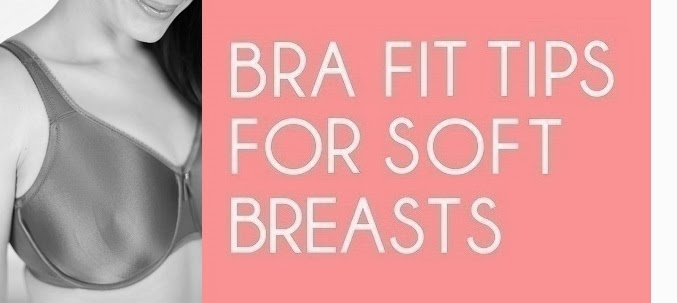Firm breasts have a defined shape and need a bra that is as close to their shape as possible to get good fit (the most common problem is finding a cup size that fits but the style cuts into your boobs making it look like you're spilling out). Soft breasts are very fluid and tend to pour into a cup. They can flow sideways, vertically down, over your center gore and they can struggle to fill the top part of a bra. Soft breast tissue also jiggles a lot more and can slide around inside your cup if the fit isn't spot on. You can also find that soft breast tissue wrinkles as there isn't as much fatty tissue in the upper layers of skin.
There are lots of reasons why breast are, or become, soft. Genetics is a big player here, breastfeeding, weight gain or loss and simply getting older are some of the major factors. Soft breasts have less firm fat and collagen in them than firmer breasts. If you think about breast fat and collagen as internal scaffolding then it makes sense that dense, firm breasts can retain a lot of lift and shape even without a bra. Soft breasts, on the other hand, need more support because they can't lift themselves up. Here are some bra fit tips for soft breasts:
 |
| The medium height gore and cup shape of Eva have been a huge success for heavy, soft breasts in bands 34+ |
Fit Tip #1
Look for bras with a medium to tall gore that will keep your breasts separate from one another.
 |
| Dessous has been a popular choice for our clients with soft breasts as the seams are soft and the sides are tall |
Fit Tip #2
Bras with tall sides (the piece of fabric coming down from the strap) are good for side heavy soft breasts. However, avoid bras with an inside side sling because they can cause a ridge in your breast tissue. If you love the bra you can always cut out the inner sling which is bisecting your boob.
 |
| A structure lower cup and stretchy upper cup like Envy by Panache can work really well |
Fit Tip #3
Stretchy fabrics can be your friend (especially in an upper cup where you might struggle to fill) but you also want a bra with some structure to minimize the bounce. 3 or 4 part cups with a firm lower cup and stretchy upper cup can work really well.
 |
| A molded cup like Wacoal's Basic Beauty can be useful for breasts that dent easily |
Some women find that any seams create ridges in their breasts and so need molded cups. Be aware that you might get some hollow space at the top of the cups (especially near the strap) but this isn't terrible for fit.
While there is very little you can do to change your breast tissue density (outside of surgery), remember that breast tissue skin is like any other part of your skin, it benefits from good moisturizing and sun protection. So get the girls lathered up with some SPF and lotion!
As with all things boob, no one solution fits all so if you have questions about soft breast tissue fit then ask them in the comments below and we'll answer as best we can xx


